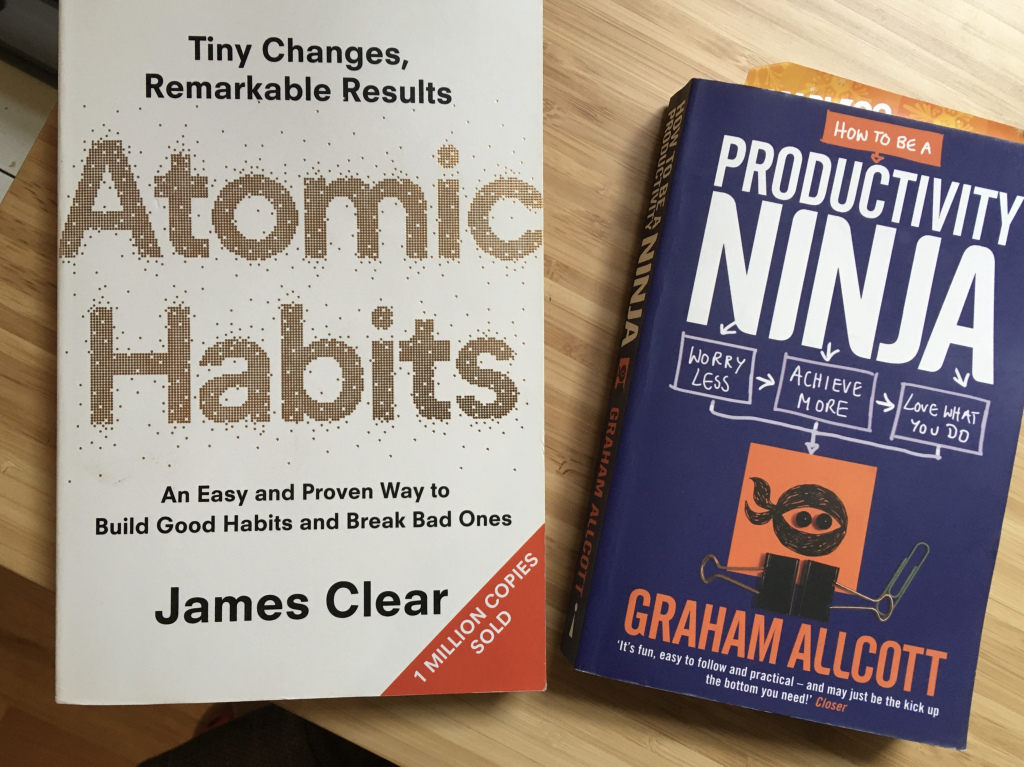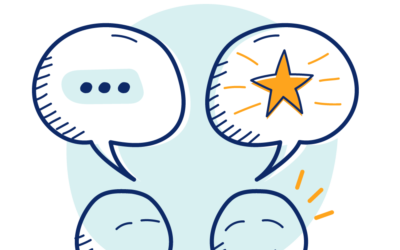I sometimes joke that ‘one multi-task too far’ will probably be my epitaph, because I’m always trying to do too much. There are a lot of downsides to this way of being, but I’ve also learned a fair bit about productivity along the way. As a coach, mentor and co-worker I often hear others looking for tools and tips around productivity so I thought I’d share mine here in case it’s useful:
Disclaimers:
Some might be useful to you, others might not be your cup of tea – I’m not suggesting these work for everyone, they just work for me. If you have alternatives please share these – I’m always interested to hear other perspectives and ideas.
I doubt any of these are ‘my idea’ – like a magpie I take shiny ideas and techniques I spot around me that work for me and line my nest with them. I try and credit any sources when I can remember them, although sometimes original source may have been lost or my way of doing things altered the original beyond recognition!
- Start with the end in mind (this phrase might be from Stephen Covey, but it’s also based on the GROW model of coaching)
I never do anything unless I’m clear why and it is aligned with my priorities. That means setting priorities or ‘goals’. I set annual goals and chunk these down into ‘termly’ goals – about 12-13 weeks in length. Being a coach I make sure my goals are clearly defined – outcomes (not activities), specific/ measurable, positive and stretching. So earlier this year this was one of mine:
‘Develop capacity to deliver brilliant and inclusive events online through new skills, resources and training.‘
I limit myself to no more than 4 goals in any term – and then develop a plan that identifies the key tasks/ actions and resources I need to make sure the goals are achievable.
I stick these goals where I can see them (they are in front of my desk) – and I also have a pictorial version that I’ve sketched which is a more fun way to convey a sense of direction.
2. Develop your own systems to keep you on track
I have 4 main systems for managing my time productively:
Firstly, I use a daily planner based on the ‘Self Journal’ template. I don’t use that particular journal in its entirety, but I like the day planner which means I block out my time daily (usually the night before or over breakfast before I start work) so I’m clear what I’m doing when. It also encourages you to identify 3 targets each day – this is often difficult as I can usually think of at least 5; but it reminds me to focus on the key 3 things…
Secondly, I use task management software called ‘Toodledo’ which was suggested in a book about productivity which I highly recommend (How to be a productivity ninja – by Graham Allcott). Toodledo is where I keep my ‘to do’ list which I can segment into different categories (Home/ Finance/ Work/ Waiting On) and organise into sub-folders like projects, importance or urgency. There’s an art to writing a good task – specific, doable – which Graham explains in his book. And he suggests you should never add a task to a list that takes less than 2 mins to do – just do it. Having somewhere I can reliably ‘park’ the millions of things I think of to do each day keeps me focussed and means I don’t forget to do too many things. I also have managed to stop worrying about forgetting to do things. There’s an app and desktop version.
Thirdly, my email ‘filing’ system is based on these same folders too – Waiting On/ Home/ Receipts/ Action. If there’s something I need to do, I put the email in ‘Action’ and write it on my task list. If I need the info saving, it gets saved in a folder. Otherwise I delete emails to keep my inbox as close to empty as possible (and periodically I tidy it up and delete anything that slips through on a bad day).
Fourthly, I use my calendar to block out time to do work – for example, anytime I book in work I make sure I block the time I need to prepare/ follow-up as well as deliver the work (for example if it’s to facilitate an event I’ll block a half-day to draft the plan etc). The vast majority of what I need to do is blocked into my calendar at the point I commit to doing it so I can see at a glance whether and when I have space to do things. (I have quite a few other systems for planning my work but will stop sharing now as I’m picturing getting weird looks already).
3. Focus on cultivating habits
Jim Richardson recommended this book Atomic Habits in a tweet once and I really like it too. For years I’d been using the technique of setting goals and identifying specific tasks but the regular things you do daily or weekly don’t fit well do well into that model of planning. James Clear makes a strong case for the power of cultivating positive habits, and offers some very practical advice (backed up by neuroscience) about how to break bad ones and make the ones you know you should do but find hard to stick to a bit easier.
4. Active reflection
Research shows that as little as 15 mins a day reflecting on how things have gone and how to apply that learning to future action can increase productivity by 20%. I try and make a habit to set aside an hour for reflection once a week – and I keep a very simple log of any insights/ observations about what has worked/ not worked so well and how I plan to use that learning in future.
I’m slightly conscious as I share this how nerdy this might sound – but it works for me. I hope there’s something in this that might work for you too…

